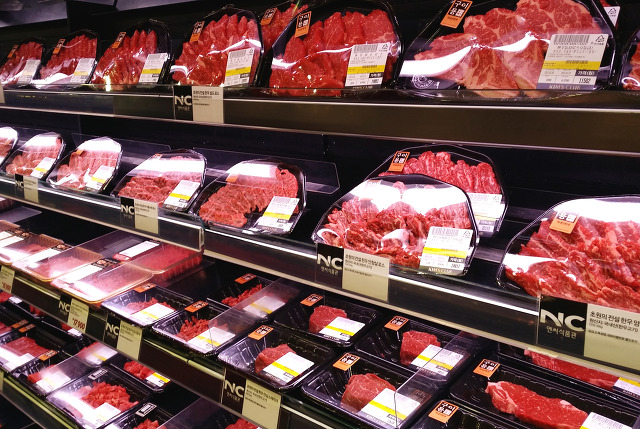
The average annual meat consumption per person for 2015 was 47.6kg, an increase of over 900 percent from 5.2kg in 1970. (image: KobizMedia/ Korea Bizwire)
SEOUL, Aug. 16 (Korea Bizwire) – The Korean diet has shifted rapidly over the past half century to become more westernized, with increased consumption of meat and a drop in rice consumption.
According to a recent report by Nonghyup’s Livestock & Economy Research Institute, the average annual meat consumption per person for 2015 was 47.6kg, an increase of over 900 percent from 5.2kg in 1970.
Consumption of eggs also increased from 4.2kg to 13.4kg per person, while milk consumption increased from 1.6kg to 77.6kg per person, both over the same period.
The study further revealed that consumption of vegetables, fruits, and marine products increased as well, by 3, 6.9, and 2.2 times, respectively.
The institute pointed to Korea’s rapid economic development in the 1960s and 70s following the Japanese colonial period and the Korean War, which gave consumers the purchasing power to buy more expensive food products like meat. The increased meat consumption, according to the institute, was also in part behind Koreans’ improved physique.
In fact, statistics show that the average height of a 20-year-old male rose from 166.4cm in 1960 to 174.9cm in 2015. The figure for women also increased from 153.8cm to 162.3cm.
Yet, despite that fact that Koreans now enjoy different kinds of food and a diverse diet, their palates have grown more westernized, mostly among those in the younger generation, resulting in a significant decrease in rice consumption, said the institute.
The data showed that annual rice consumption per capita decreased by 54 percent, from 136.4kg in 1970 to 62.9kg in 2015.
“If this trend of a westernized diet continues, there will be heightened concern over a decrease in the food self-sufficiency rate,” said an institute official. The food self-sufficiency rate is the ratio of daily food consumption that is supplied by domestic production. “There’s a need to devise measures to increase the rate of consumption domestic agricultural and livestock products.”
By Lina Jang (linajang@koreabizwire.com)






